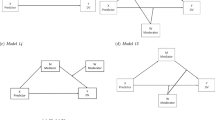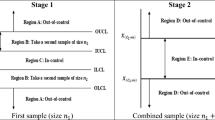Abstract
Sequential simulation of a continuous variable usually requires its transformation into a binary or a Gaussian variable, giving rise to the classical algorithms of sequential indicator simulation or sequential Gaussian simulation. Journel (1994) showed that the sequential simulation of a continuous variable, without any prior transformation, succeeded in reproducing the covariance model, provided that the simulated values are drawn from local distributions centered at the simple kriging estimates with a variance corresponding to the simple kriging estimation variance. Unfortunately, it does not reproduce the histogram of the original variable, which is one of the basic requirements of any simulation method. This has been the most serious limitation to the practical application of the direct simulation approach. In this paper, a new approach for the direct sequential simulation is proposed. The idea is to use the local sk estimates of the mean and variance, not to define the local cdf but to sample from the global cdf. Simulated values of original variable are drawn from intervals of the global cdf, which are calculated with the local estimates of the mean and variance. One of the main advantages of the direct sequential simulation method is that it allows joint simulation of N v variables without any transformation. A set of examples of direct simulation and cosimulation are presented.
Similar content being viewed by others
REFERENCES
Almeida, A., and Journel, A., 1994, Joint simulation of multiple variables with a Markov-type corregionalization model: Math. Geology, v. 26, no. 5, p. 565–588.
Bourgault, G., 1997, Using non-Gaussian distributions in geostatistical simulations: Math. Geology, v. 29, no. 3, p. 315–334.
Caers, J., 1999, Adding local accuracy to direct sequential simulation: Stanford Center for Reservoir Forecasting, Annual Meeting 12, v. 2.
Caers, J., 2000, Direct sequential indicator simulation: Proceedings of 6th International Geostatistics Congress, Cape Town, South Africa.
Gomez-Hernandez, J., and Journel, A. G., 1993, Joint sequential simulation of multigaussian fields, in Soares, A., ed., Geostatistics TROIA'92: Kluwer Academic Pub., Dordrecht, The Netherlands, p. 85–94.
Goovaerts, P., 1997, Geostatistics for natural resources characterization: Oxford University Press, New York, 483 p.
Journel, A. G., 1994, Modeling uncertainty: some conceptual thoughts, in Dimitrakopoulos, R., ed., Geostatistics for the Next Century: Kluwer Academic Pub., Dordrecht, The Netherlands, p. 30–43.
Luís, J., and Almeida, J., 2000, Stochastic simulation of a multi-phase set of fluvial sand channels by using a geostatistical pixel-based algorithm: Proceedings of 6th International Geostatistics Congress, Cape Town, South Africa.
Ripley, B., 1987, Stochastic simulation: Wiley, New York, 237 p.
Soares, A., 1998, Sequential indicator simulation with correction for local probabilities: Math. Geology, v. 30, no. 6, p. 761–765.
Author information
Authors and Affiliations
Rights and permissions
About this article
Cite this article
Soares, A. Direct Sequential Simulation and Cosimulation. Mathematical Geology 33, 911–926 (2001). https://doi.org/10.1023/A:1012246006212
Issue Date:
DOI: https://doi.org/10.1023/A:1012246006212




